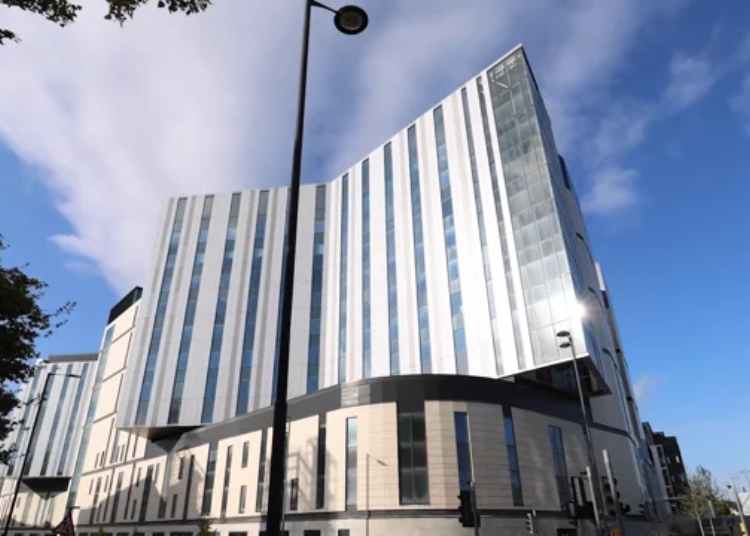Among many collaborative contracting styles, the managing contractor (MC) approach is one of the most implemented models in the construction industry, being widely used in projects with complex designs and multiple stakeholders. But what exactly is it?
The managing contractor is a model in which the contractor’s involvement in a project can start as early as the feasibility stage and continue through the construction and commissioning phase. Managing contractors leverage their expertise to support clients on the project’s viability review, design development, and construction oversight, ensuring seamless integration between all phases.
This early contractor involvement alternative has been used in several projects, such as Bundaberg Hospital (click here for further details on this project) in Australia and the Royal Liverpool Hospital in the UK.
In this article, we will explore the Managing Contractor Model further, its suitability, understand its pros and cons, and some practical tips for successfully implementing it – keep reading.
What is the Managing Contractor Model?
The managing contractor model is a procurement approach widely used by many clients in complex projects requiring significant design coordination during the front-end phase.
Unlike traditional methods, a managing contractor is engaged from the project’s earliest stages (i.e. feasibility studies), collaborating closely and managing the integration between architects, engineers, subject matter experts, and subcontractors.
Through this method, clients or project owners can leverage the contractor’s extensive expertise since its early involvement improves communication, rapid adaptation to changing and evolving requirements, streamlined decision-making, and efficient risk management from the project’s outset.
Typically, the owner/client hires the Managing Contractor to undertake and coordinate the construction project, which in turn will procure designers, consultants, and subcontractors to support the client in developing the project’s feasibility studies, design and oversee construction progress, and handover tasks (see figure below).

It is worth noting that, in contrast to construction management agreements, the MC bears legal responsibility for design and construction, since it directly engages designers, consultants, subcontractors, etc.
What is role of the Managing Contractor?
Whilst each contract agreement will have its features and the scope of services might slightly change for each arrangement, typically, the managing contractor (MC) plays the role of a Project Manager.
Overall, the MC’s tasks can are divided into four different phases:
- Feasibility Studies – During this initial phase, project viability is assessed. Factors like budget, scope, potential risks, and expected outcomes are analyzed to determine if the project is feasible and client/owner might decide to cancel the project.
- Design Development – Once the green flag from feasibility studies is received, the managing contractor will develop the design in close consultation with the owner
- Construction Phase – The managing contractor will oversee construction works, including procurement, cost, time, and quality management.
- Commissioning and Handover – This phase involves system testing and evaluation, addressing operational issues, training client staff for system operation, and optimizing system performance. The project is handed over to the client, complete with documentation and manuals.
The table and figure below summarise some tasks that can be included in a management contractor agreement, but as previously discussed, the scope of services might vary according to each project.
Tasks | Details | Project Phase |
Feasibility Studies (Leadership alongside the client) | Assess project viability, considering factors like budget, scope, and potential risks, which can include consultation/engagement of external Subject Matter. | Feasibility Studies |
Design Development Coordination and Management | Work closely with architects and engineers to develop project plans and specification. Evaluation of design documents, suggesting improvements and adaptations | Design Development |
Value engineering | Identify cost-saving opportunities without compromising quality | Design Development |
Risk assessment and mitigation | Identify potential risks and develop strategies for risk management | Design Development and Construction Phase |
Stakeholder engagement and communication | Maintain open lines of communication with stakeholders (i.e. facilitating/supporting the client on obtaining environmental approvals). | Design Development and Construction Phase |
Construction and Contract Management (downstream) | Oversee construction activities, ensuring compliance with plans and regulations, including contract management tasks, such as variation requests, variation orders, etc. | Construction Phase |
Quality assurance and control | Implement measures to ensure construction meets quality standards | Construction Phase |
Project progress monitoring | Track milestones and timelines, managing progress throughout, assessment of delays and extension of time claims, etc. | Construction Phase |
Resource and material procurement and coordination | Manage timely procurement and delivery of resources and materials | Construction Phase |
Site coordination and logistics | Organize and manage on-site tasks, logistics, and schedules | Construction Phase |
System testing and evaluation | Assess system functionality and performance during this phase | Commissioning and Handover |
Project handover | Transition the completed project to the client, ensuring a smooth handover | Commissioning and Handover |
Documentation and manuals | Provide essential documentation and manuals for system operation | Commissioning and Handover |
User training | Train client staff on how to operate and maintain the systems | Commissioning and Handover |
System optimization | Fine-tune systems to achieve optimal performance and efficiency | Commissioning and Handover |
Managing Contractor - Advantages and Disadvantages
As with other procurement and delivery approaches, there are advantages and drawbacks associated with the managing contractor model, and some of them are detailed below.
Managing Contractor Model - Advantages
- Effective Risk Management from the project’s outset: The managing Contractor is involved from the early stages and can bring all of its expertise from project inception, allowing for proactive risk identification and mitigation strategies.
- Transparency of subcontractor costs and pricing: Clients typically have complete visibility of subcontractors’ procurement, pricing and management.
- Client’s involvement in design development: when compared to traditional D&C agreements, owners have more influence in design development stages since they are directly involved in designer engagement
- Flexibility and Adaptability: Design changes can be accommodated without significant delays, making it suitable for evolving project requirements.
- Robust Communication: Collaboration between stakeholders is improved, ensuring precise and efficient decision-making by the centralized managing contractor figure.
- Asset whole-of-life consideration – Early involvement of an experienced contractor and asset operator harness the inclusion of O&M aspects into the design phase.
Managing Contractor Model - Risks and Disadvantages
- Conflicts of Interest: There’s a potential perception of managing contractors prioritising their interests over the project’s needs. For example, typically, design agreements are made on a “cost-plus-fee” basis, with the managing contractor with limited incentives to procure the best price and expedite the processes.
- Client’s inputs: High level of client involvement is also required to develop project design and solution and ensure the agreed delivery phase price represents value for money for the client.
- Stakeholder engagement: Long consultation process might increase project costs and duration.
- Timeline Disruptions: Frequent design changes may impact project timelines, necessitating careful management.
- Complex Contract Management: Coordinating various stakeholders and subcontractors requires efficient communication and documentation.
- Higher Management Burden: The managing contractor has increased responsibilities, potentially leading to challenges in overseeing various aspects.

When the Managing Contractor model should be used?
The managing contractor model might be the best procurement approach for:
- Projects with unknown and evolving requirements, such as research and innovation centres.
- Projects where multiple stakeholders have a strong influence on the final design outcome, such as hospitals, where the facility management contractor, technology/equipment providers and health operators have to work closely together during the asset operation.
- The client has some experience in scope definition and design management.
- The client’s preference for increased control over design, cost, and procurement
- The client has confidence that the engagement of an experienced contractor during the early days might improve constructability, help to identify significant risks and increase the robustness of feasibility studies or business cases.
How to Choose a Managing Contractor? (Which Aspects are Important?)
Selecting the right managing contractor is paramount for project success. Key aspects include:
- Contractor’s extensive experience in this contracting model.
- Excellent track record in delivering similar projects.
- Quality and experience of individuals that will lead the project.
- Renowned engineering know-how in developing and managing projects within the project’s specific niche.
Besides technical aspects, clients should also consider financial stability and insurance coverage capability since managing contractors typically bear some legal liability for design and construction.
How a Managing Contractor is remunerated?
Each contract will have its specific features. Overall, managing contractors can be remunerated on a cost-plus-fee basis, being the fee pre-specified in the agreement (circa 5-10% of construction costs).
Sometimes, clients prefer to use the schedule of rates approach, where the managing contractor is remunerated according to the resource allocation to the project, or fixed fees.
Managing Contractor - Project Examples
Below is a list of projects which have successfully used the managing contracting model:
- The Royal Liverpool Hospital in the UK.
- Margaret Court Arena in Melbourne (Australia)
- Queensland Country Bank Stadium in Townsville, Queensland (Australia)

FAQ
What is the difference between a Managing Contractor and a Construction Manager?
In the managing contractor approach the client enters a contract with the MC, which in turns engages the designers, consultants, and subcontractors, and therefore has a direct legal relationships contract with them.
On the other hand, construction management agreements are tailored slightly differently in a manner that the contractor provide services to the client only and all other agreements are executed between the client and subcontractors (designers, consultants, trades, etc.).
We suggest reading this detailed article on this topic – Managing Contracting vs Construction Manager – Key Differences & Tips (click here)
What is the difference between a Managing Contractor and Design and Building Contracting Approaches?
The table below summarises in high-level the key differences.
Aspects | Managing Contractor | Design and Build Contractor |
Design Flexibility | Clients has increased control of design development | Client has limited design flexibility due to integrated responsibility by the Contractor |
Pricing | Transparency in pricing due to open-book approach | Contractor submits a lump sum price for design and construction |
Risk Allocation | Contractor bear less risks | Contractor often assumes more risk |
Timing of Contractor Involvement | Contractor involved since feasibility studies | Contractor’s involvement starts at construction phase only (after procurement) |
Need help to choose the best procurement model?
Do not hesitate to contact us for specialised advice in construction contracts (click here)













